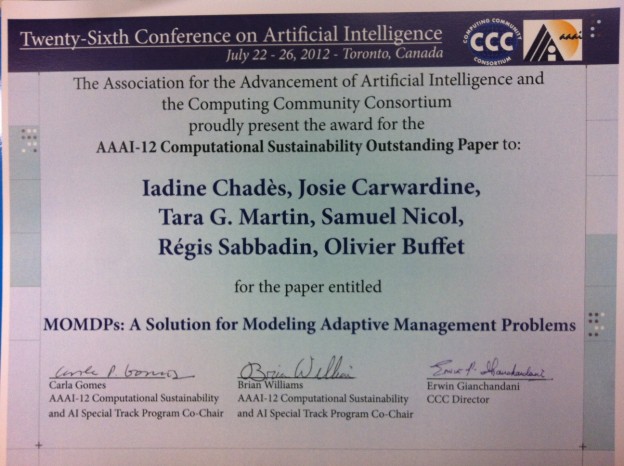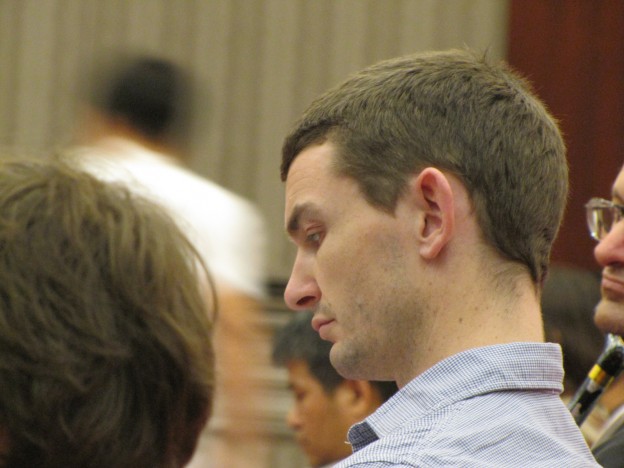Adaptive management or learning by doing, is praised as the best practice method to manage natural systems under uncertainty (see ESA’14 talk). Limited for a long time by our ability to solve adaptive management problems, our research now allows us to find the best adaptive management strategies when networks change over time. This was made possible thanks to our research in Artificial Intelligence (AI) and Conservation science.
What have we discovered in 2 steps?
1) Unlocking the beast. Being strategic about adaptive management means finding the best management strategy when we don’t know exactly what will happen in the future (structural uncertainty). Until very recently, finding the optimal strategy to such decision problems was possible for very small size problems, limiting the application of adaptive management principles. In 2012, we published a fundamental paper that demonstrates that adaptive management problems can be solved using a simplified POMDP (Partially Observable Markov Decision Process, see tiger paper). This is an important finding because modelling an adaptive management problem as a POMDP means we can use very fast algorithms from AI and solve very large adaptive management problems. On a side note, this paper was published at the top AI Conference (AAAI) and received “best paper award” (Computational Sustainability track, thanks for the support!).
2) Boldly go where no one has gone before. Our second step was to demonstrate the power of our findings on the most complex problem we could imagine. Thinking about it, the most difficult problems to solve in ecology are spatial problems (migratory networks) with changing dynamics over time (non stationarity, climate change) for which the consequences on species management are unknown (structural uncertainty, population dynamics). Well, we did it! Check our splendid paper in Proceedings B led by Sam Nicol that brings it all together. This work is amazing for so many good reasons: the shorebird application, the fundamental AI research, the writing, the figures, the authors, the journal and the 20-page supplementary information!
I hope you will enjoy it as much as we did.
Sam also wrote a fantastic conversation article on the topic that explains the impact of our Proc B paper: We need to get smarter to save shorebirds from rising seas.


